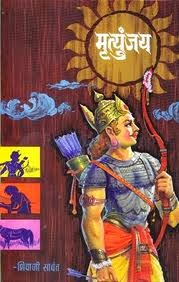Book Review: The Big Short

Title: The Big Short: Inside The Doomsday Machine
Author: Michael Lewis
Genre: Finance
Pages: 266
Publisher: W.W. Norton and Company
ISBN: 9781846142574
The 2010 non-fiction book "The Big Short: Inside The Doomsday Machine" by Michael Lewis is about the run up towards the housing and credit bubble of the 2000s in the financial markets of USA. The book effectively maps and informs readers about the real players in the bubble who were primarily credit default swaps in a market that sought to bet against collateralized debt organization bubble. Thus, they ended up profiting from the financial crisis of 2007-2010.
In a country like India where financial literacy is not well-advocated, the book is a welcome change. In fact, you don't even have to understand the intricacies of the complex business of sub-prime mortgages to be gripped by "The Big Short". Indeed, the less you know to begin with, the more remarkable results the book can produce. Michael Lewis has made his reputation with gripping books such as Moneyball and The Blind Side, which is no accident that they were made into highly successful English films and performed well even in countries where few people follow American sports.
Most of the book deals with the financial instrument called asset backed securities. Despite being a non-fiction book, the storylines, the characters, the ideas reflected in the book are so strong that you are eventually drawn into the field of finance in a way that you might have never explored the field otherwise. Despite it being set temporally in the financial markets of the US, you do realize that it could be placed in any financial market across the globe.
Michael Lewis masterfully deconstructs what the sub-prime mortgage crisis did for the Lehman Brothers, which a small group of investors and hedge fund managers along with bankers spotted that lending large sums of money to fundamentally insolvent house buyers was bound to end in tears. The language adopted by the book is extraordinarily simple. There is minimal use of the financial jargon and never does he assume that you would know what it means. He illustrates the technicalities of the topic (asset backed securities) through analogies that intelligent readers can grasp.
The book has pieces of generalizations and exaggeration and a limited frame of reference, however, it manages to give us the truest picture of what went wrong on Wall Street Journal and the reason behind it. In portions, it reads like a lesson on morality while in other patches, it reads like a modern day farce. Despite its tone and topic, Michael Lewis does exceptionally well as a storyteller and succeeds in explaining and demystifying how things work in Wall Street while creating a compelling narrative.
The book was shortlisted for the 2010 "Financial Times and Goldman Sachs Business Book of the Year" Award. Similarly, it also spent 28 weeks on the New York non-fiction bestseller list. With the pace of a thriller, The Big Short is probably one of the best pieces of financial journalism written in recent times.
Title: The Big Short: Inside The Doomsday Machine
Author: Michael Lewis
Genre: Finance
Pages: 266
Publisher: W.W. Norton and Company (USA) and Penguin (India)


Comments